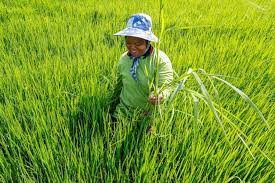Vietnam and Thailand rice exports soar after India ban
By YUJI NITTA and KOSUKE INOUE
Exports of rice from Vietnam and Thailand have surged following restrictions in India, the world’s biggest supplier, as importing countries scramble to find new sources.
Agriculture is a “pillar” of the economy, Vietnamese Prime Minister Pham Minh Chinh said Jan. 3 at a conference of the Ministry of Agriculture and Rural Development.
As declining demand for such major exports as smartphones casts a shadow over the economy, record rice export volumes are one of the few bright spots.
Vietnam exported $4.6 billion of rice in 2023, up 35% on the year, customs data shows. Exports to Indonesia increased more than 10-fold, while exports to Singapore increased about 40% and Ghana roughly 60%.
In volume terms, Vietnam is the world’s fifth-largest rice producer and third-largest exporter. Despite high temperatures and low rainfall across many parts of Asia stemming from El Nino, production in 2023 appears to have increased 1% to 2% over 2022 to more than 43 million tonnes.
Export volume, which had hovered around 6 million tonnes to 7 million tonnes a year in recent years, exceeded 8 million tonnes in 2023.
Thailand, the world’s second-largest exporter, is estimated to have exported more than 8 million tonnes in 2023 — up more than 10% from the previous year and the highest level since 2018. Drought and rising costs kept exports down in recent years, but they have since picked up.
The rapid increase in exports from Vietnam and Thailand was triggered by the Indian government’s ban on exports of non-basmati white rice since July.
The move was ostensibly to secure supply and control prices in India, but some see it as a measure to drum up support heading into this spring’s general election.
India accounts for 40% or so of the world’s rice exports. Iran, Saudi Arabia and China are main buyers, with some African countries also highly dependent.
Importing countries are looking for stable sources. Indonesian secured a commitment for 2 million tonnes of rice imports from Thailand for 2024 when President Joko Widodo met with Thai Prime Minister Srettha Thavisin in December. Indonesia also secured commitment for 1 million tonnes from India and has reached an import agreement with Cambodia.
Rice prices soared as a result of India’s ban. Benchmark export prices in August, soon after the ban took effect, were up 15% from the previous month at $645 per tonne, according to the United Nations Food and Agriculture Organization. The Vietnam Food Association says world rice prices have gone up 15% to 25%.
“Even though rice is expensive, I can’t buy less,” a woman living in Hanoi said. “I just have to cut back spending on clothes and eating out.”
Rice is selling for around 100,000 dong ($4) per 3 kilograms at supermarkets. Market prices are up 40% or so on the year, according to the Vietnam Food Association. The impact of high prices spreads easily, since the country relies on the staple for many of its foods, such as the noodle dish pho.
Some forecasts show rice prices remaining high in 2024. India may continue its export restrictions after the election, and the effects of El Nino could last until midyear.
This article has been republished from Nikkei Asia.

